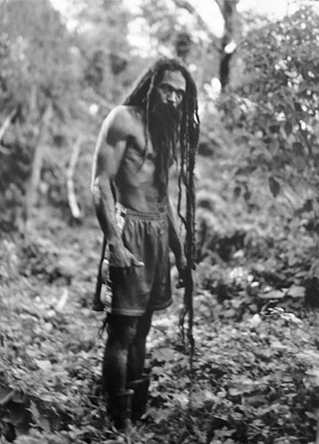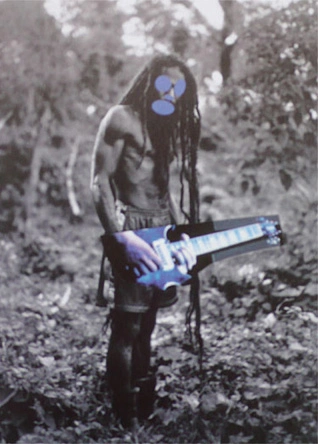The Skit
Last week I received an offer from the Strand Gallery in New York to show my latest body of work entitled ‘Everybody Sharts.’ It’s a collection of mixed-media pieces where I appropriate photographs, color them selectively, and doodle on them in order to express my artistic vision.
The pièce de résistance is this piece below:

When I first showed it to my agent, she mentioned Elliott Erwitt. That he’s the one who actually took the photograph. And that I’d be putting myself in a position to be sued by him. I told her, as the crass click bait of a title says, Erwitt can kiss my ass. I’d win the lawsuit and I will make mountains of dineros in New York without him getting a single penny. OK fine, in Vermont and Connecticut too, but let’s not go there. And… Scene.
So everything in my little skit is not true, except for the sad part that if I were to sell the above photo, Erwitt would, in fact, probably lose the lawsuit if he were to sue me for copyright infringement. On April 25, 2013, the United States Court of Appeals for the second circuit decided in ‘Cariou v. Prince’ that transformative art constitutes fair use and does not violate any copyrights. Bear with me.
The Case
Patrick Cariou is a French photographer who, in 2000, published a book called ‘Yes Rasta.’ He had lived among Rastafarians in Jamaica for six years, and the book was his collection of portraits and landscape photographs taken during that period.

In 2005, Richard Prince, a well-known appropriation artist (as per the description of the court), came across a copy of Cariou’s book in a bookstore. He tore 35 photos out of the book and altered them by painting over the subjects’ faces, among other things. He then bought 3 more copies of the book and created 30 additional pieces. Prince prepared a show featuring some of the pieces he created and sold the catalog from that show. At no time did he inform Cariou that he is using his photographs nor did he take permission to do so.

When Cariou found out, he decided to sue Prince and the Gagosian Gallery where some of the pieces were exhibited. The Southern District of New York found that the use of Cariou’s photos by Prince does not constitute fair use. Prince appealed and the Court of Appeals for the Second Circuit ruled in his favor.
The Law
The Intellectual Property clause of the US Constitution states that the purpose of the Copyright is “[t]o promote the Progress of Science and useful Arts…” But, as Judge Pierre Leval said:
“[t]he copyright is not an inevitable, divine, or natural right that confers on authors the absolute ownership of their creations. It is designed rather to stimulate activity and progress in the arts for the intellectual enrichment of the public.”
This is where ‘fair use’ was supposedly born. As ownership could stifle creativity of others, a middle ground was found. For the use of a copyrighted work to be considered fair, four factors are looked at:
1- the purpose and character of the use.
2- the nature of the copyrighted work
3- the amount used from the original work; and
4- the effect of the use has over the market or value of the copyrighted work.
In the Cariou v. Prince case, the court mentioned that the purpose and character of the Prince pieces differ significantly from the aesthetic that Cariou presented, at least in 25 of the 30 photos Prince appropriated. As per the court documents: “Where Cariou’s serene and deliberately composed portraits and landscape photographs depict the natural beauty of Rastafarians and their surrounding environs, Prince’s crude and jarring works, on the other hand, are hectic and provocative.”
Consequently Prince’s art was seen as ‘transformative’ enough so as to constitute fair use of Cariou’s intellectual property.
The money
OK. So we played make-believe and talked legalese. That’s all for nothing. Let’s talk dollars, doubloons, liras, please.
When Cariou published his book in 2000, his publisher, PowerHouse Books made 7,000 copies. It was a single print and it’s now out of print. Of this first edition, 5,791 copies were sold, and Patrick Cariou made a little bit over $8,000 from his work.
Six years of his life spent living with the Rastafarians, getting to know them, photographing them, and all he made was $8,000.
Then comes Richard Prince and steals the photos without so much as an email to Cariou to tell him: “Bend over and bite on the pain stick; I’m going to do my deed.” I’m sorry, my use of the verb steal is not in its place. One steals food, but one appropriates art. So yes, Richard Prince appropriated Cariou’s photos. He exhibited them, and he sold his pieces. For how much you ask? For a whopping $10,480,000. In case zeros are confusing, let me spell it out. Ten million, four hundred and eighty thousand dollars.
The Morale
Photographers, beware. Every prick with a marker pen can now take your photos, draw a few lines on them, and they’re his own. It doesn’t mean this is going to happen, but this is a huge blow against preserving photographers’ intellectual property. A precedent has been set for even worse future examples. Thank you transformative art. I’m riding this wave and Mr. Erwitt can bite me.